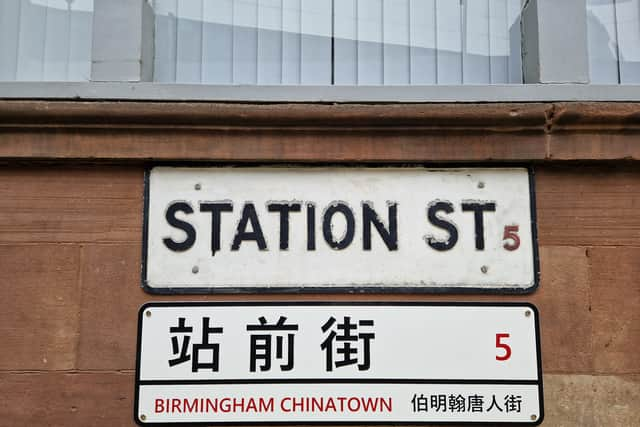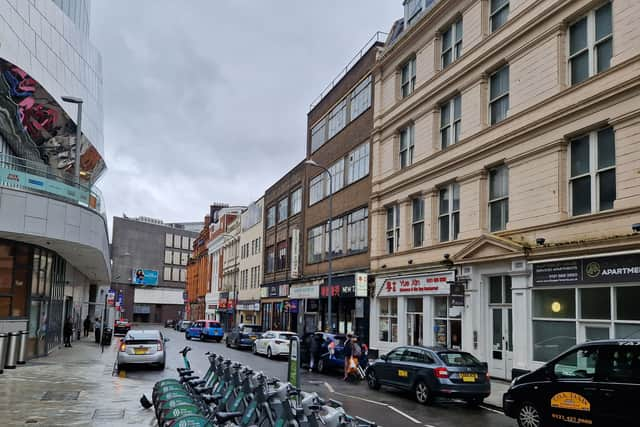Hope for the Save Station Street campaign in Birmingham unveiled by council heritage documents
and live on Freeview channel 276
A new document has given hope that Birmingham’s heritage buildings could soon benefit from further protection.
The future of some of the city’s historic buildings has been thrust firmly in the spotlight in recent months, as seen in the campaign to Save Station Street and the venues that line it, such as the Electric Cinema.
Advertisement
Hide AdAdvertisement
Hide AdBlack Sabbath frontman Ozzy Osbourne recently backed the campaign, joining celebrities such as Peaky Blinders creator Steven Knight and Succession star Brian Cox. At a Birmingham City Council (BCC) meeting last week, cabinet members discussed a recently-published document which aims to “expand on and add further detail to the existing heritage policy”.
The Historic Environment Supplementary Planning Document (SPD) will identify what is “characteristic and significant” about Birmingham’s historic environment and outline the council’s objectives for different types of heritage assets.
A council report continues: “It will provide guidance on making changes to different kinds of heritage assets, including alterations to reduce carbon emissions. It will also provide a criteria and procedure for managing Birmingham’s local heritage list and establish an ‘at risk’ register for heritage assets in the city to guide action to prevent further deterioration.”


The document itself highlights the rich and diverse historic environment that Birmingham boasts, from prehistoric archaeological remains and Victorian Parks to medieval houses and the Brutalist-style concrete buildings of the 1960s.
Advertisement
Hide AdAdvertisement
Hide AdWriting in the document’s foreword, council leader John Cotton said recent heritage regeneration projects had benefited the city, referencing the restoration of Moseley Road Baths in Balsall Heath and new homes being provided in historic buildings in the Jewellery Quarter.
“Historic spaces such as our parks and canals are places that contribute to our health and well-being, whilst archaeological sites and historic landscapes help us to learn about the origins of our city and our ancestors,” Cllr Cotton wrote.
“The historic environment also has a role to play in the challenges we face with climate change,” he continued. “By encouraging the retention, re-use and retrofitting of historic buildings we can reduce the carbon emissions from construction and reinforce Birmingham’s historic character and distinctiveness.”


The document notes that it is important that the city’s heritage assets are “sustained and enhanced” as the city grows and renews itself. Speaking at the cabinet meeting this week, Conservative leader at BCC Robert Alden stressed that the new document needed to show it could save historic assets such as Station Street.
Advertisement
Hide AdAdvertisement
Hide Ad“Time and again, you can see heritage assets in our city are at risk and if this policy is going to mean anything, it has to be able to show that it can save such heritage assets that are a key part of our character and culture,” he said.
Writing on X, formerly Twitter, Councillor David Barker wrote that the document “could be huge” for Station Street. Meanwhile Cabinet member Rob Pocock said it would help strike the right balance between a “city that needs to expand” and a “history that needs to be protected and preserved.”
He continued that the document would help put a “protective field” around heritage assets where they need to be retained. “This report should be welcomed, everything we can do to protect our heritage is a very positive thing,” Cllr Jayne Francis added.
Council leader John Cotton told the meeting that a consultation is proposed to take place in the summer of 2024 for six weeks, before a final document is brought back to cabinet for adoption.
Advertisement
Hide AdAdvertisement
Hide Ad“I know the public consultation has been eagerly awaited by heritage groups and developers alike because it will help deliver that greater clarity and certainty around areas of heritage management where the policy is currently silent,” he said.
Comment Guidelines
National World encourages reader discussion on our stories. User feedback, insights and back-and-forth exchanges add a rich layer of context to reporting. Please review our Community Guidelines before commenting.